4 Easiest Herbs To Grow Indoors
Tips for how to start an indoor herb garden and details about the four easiest herbs to grow indoors.
Are you an herb lover like me? Herbs, fresh or dried, pack a punch of flavor and can take an ordinary dish to the next level. They can also look (and smell) nice when grown indoors on your kitchen windowsill or in another sunny spot in your home.
While many people enjoy having fresh herbs on hand, it may seem intimidating to grow them yourself. However, growing herbs indoors is much easier than you may think, and it is convenient to have them growing right in your kitchen, fresh and available when you need them all year round.
If you are getting started growing herbs indoors, there are a few tips I can share to help set you up for success and get the most out of your indoor herb garden. I will also share details about the four easiest herbs to grow indoors.
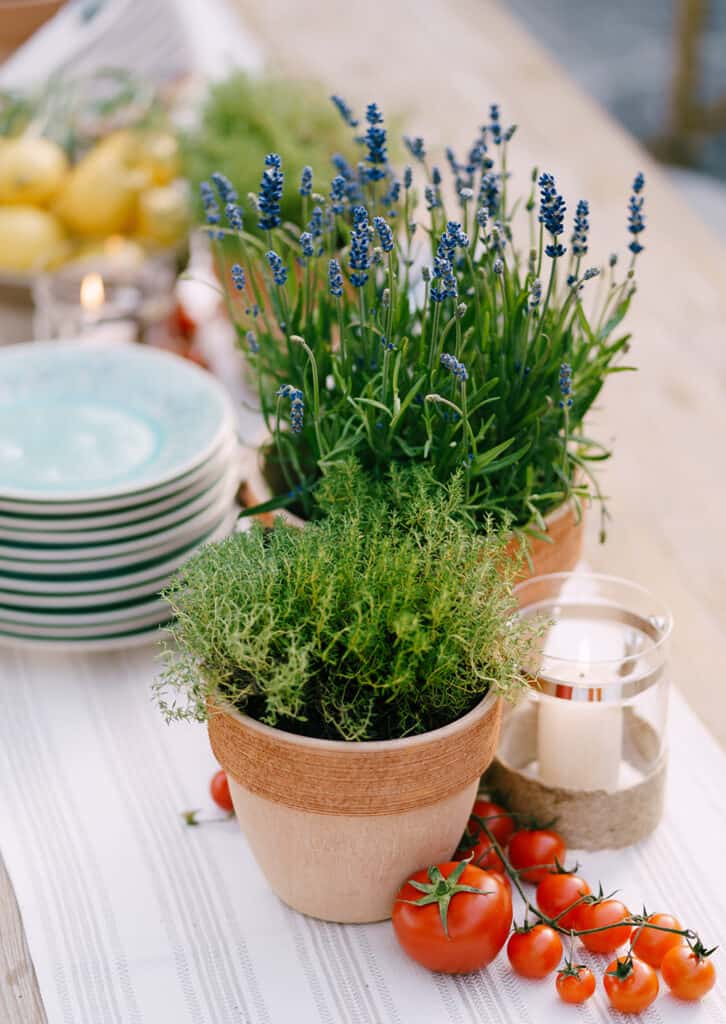
What You’ll Need to Start an Indoor Herb Garden
Before we talk about the easiest herbs to grow indoors, let’s talk about some of the supplies you will need and other things you want to consider.
First, you’ll need to decide if you want to grow your herbs from seed or buy them as established transplants. There are pros and cons to each.
Growing Herbs from Seed vs. Transplant
Growing from seed is cheaper, as a packet of seeds yields many plants, often for just a few dollars. You can also find a wider variety of herbs as seeds if there is a particular type you are looking for. However, there is a more extended waiting period when growing from seed, so a little more patience is needed.
Pro Tip: Eggshells make great seed starters! Read more in my blog post: Using Eggshells for Fertilizer in the Garden.
When buying an herb plant from a garden center or farmer’s market, the plant is often established and ready to start harvesting immediately. You may have more difficulty finding less popular varieties, and the cost per plant will be more than if growing from seed. If the plant has been living outside, you will need to gradually transition them inside to get them used to their new environment in your home.
This decision also depends on the herb you want to grow. For instance, perennial herbs ( plants that come back the next year) are easiest to grow from young transplants, while others do best started from seed and replanted throughout the year.
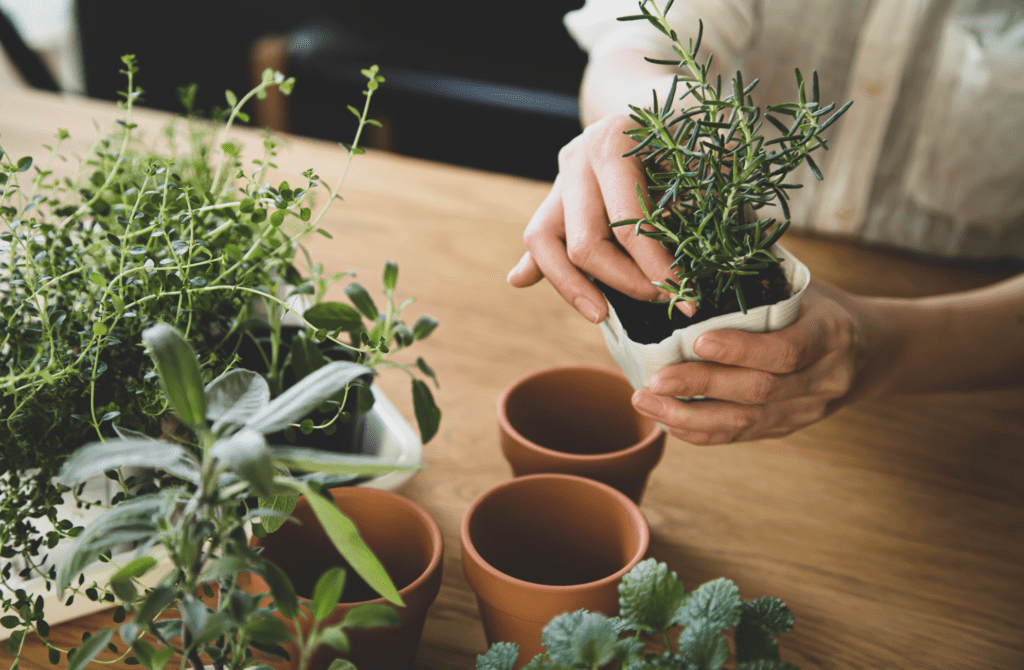
Other Supplies You Will Need
Aside from seeds or transplants, you will need a few other things to start your indoor herb garden.
Potting Soil
First, you will need quality, well-draining potting soil. Then, if starting from seed, you can use a specially formulated seed starting mix to give them their best start.
Pots
You will also need pots to grow your herbs. Each type of herb should be grown in its own individual container.
Many different types of pots will work well for growing herbs indoors. While terra cotta pots work great, you may prefer a different look for your kitchen. You can also use plastic, wood, metal, or ceramic pots. Ensure proper drainage (poke a few holes in the bottom if needed) and use a drip plate.
Individual pots should be at least 4-inches wide to keep plants happy. Even better, choose a 6- or 8-inch pot if you have the space.
Light
Choosing the right spot indoors for your herbs to live is essential to help them grow well. Most herbs need at least 4 hours and as many as 8 hours of sunlight per day. If you can, place your indoor herb garden near a south-facing window, but other well-exposed windows can also provide enough sun. If needed, you can also make or buy a grow light to help make sure they get enough light.
4 of the Easiest Herbs to Grow Indoors
Now that you know what supplies are needed to start an indoor herb garden let’s talk about different herbs. Some herbs are more accessible to grow indoors than others. The four easiest herbs to grow indoors are basil, oregano, rosemary, and thyme.
In this section, you’ll find basic information about the four easiest herbs to grow indoors, including tips for growing and typical uses.
Basil
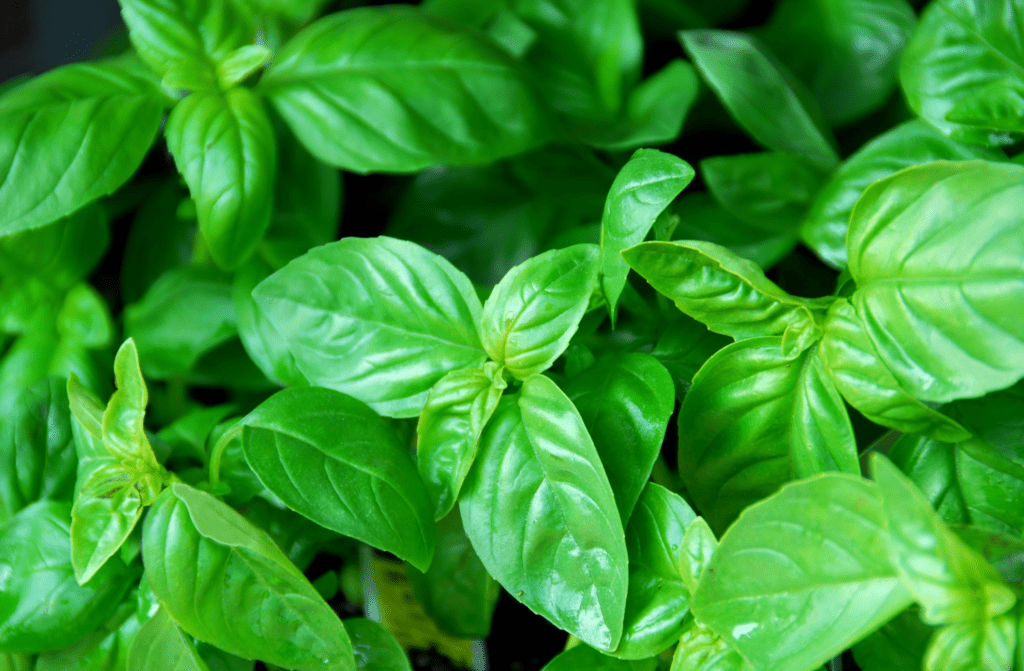
Basil is one of the most popular herbs. It has a delicious aroma and is used in many cuisines worldwide.
To grow basil indoors, choose a smaller globe-type variety and use a larger pot to promote healthy growth. Basil loves heat and bright light. While easy to grow from seed, basil plants have a short life span. For a steady supply of fresh basil, plant a new batch of seeds every few weeks. Basil should be watered once or twice a week, and flowers should be pinched back if they appear. To harvest, pinch off individual leaves as needed, or cut a few stems just above where two leaves meet.
Basil has a sweet and savory taste that pairs very well with tomatoes. Add to sauces, salads, sandwiches, and pizzas. A popular use for fresh basil is to make your nome made pesto.
Oregano
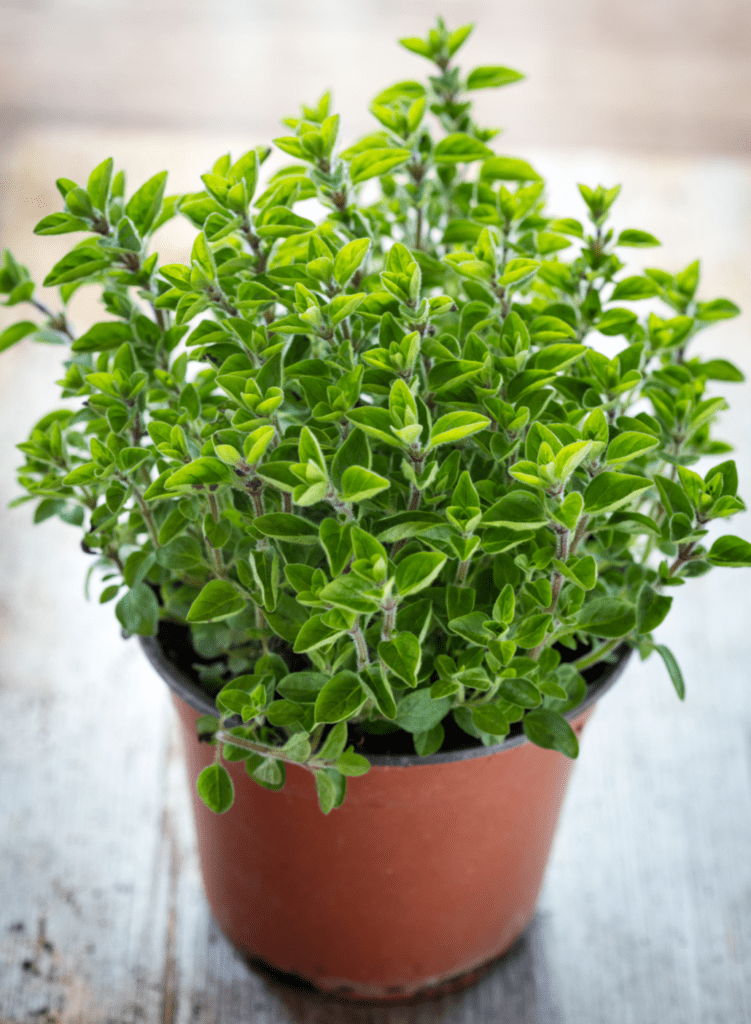
Oregano is a hardy and drought-tolerant herb, which makes it very easy to care for and grow indoors. However, it should only be watered when the soil dries out and should be trimmed frequently to keep it tidy.
Fresh oregano leaves have a beautiful aroma and a mild flavor. To use, strip the leaves from a snipped stem. Adding fresh oregano at the end of cooking is best to retain its flavor. Like many other herbs, oregano is more flavorful when dried. Use oregano to flavor soups and stews, tomato sauce, and meats.
Rosemary
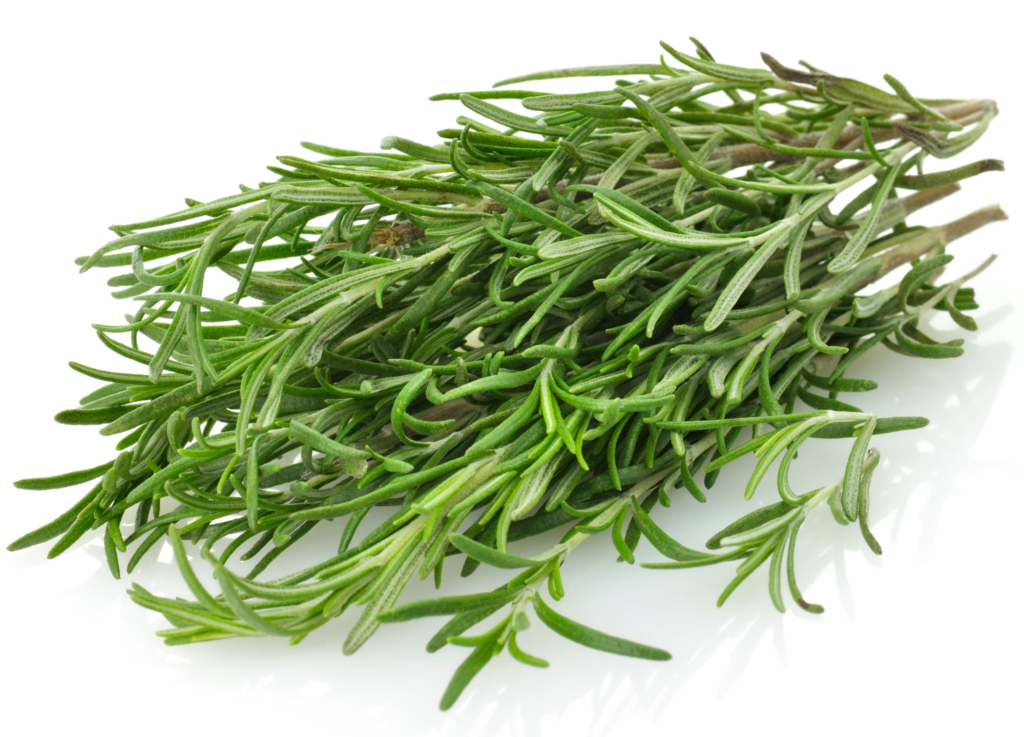
Rosemary is a fragrant herb with a rich, piney flavor that grows very well indoors. It is sturdy a study shrub with needled leaves.
Rosemary works well to flavor meats like chicken, lamb, and pork, as well as starchy vegetables like potatoes and winter squash. To use, strip the leaves from the stems and finely chop, or add a whole sprig to soups or sauces to infuse with flavor.
Rosemary can also be used for holiday decorations and beautiful wreaths.
This herb prefers to remain on the dry side and should only be watered about once every week. It typically requires full sun but can also tolerate less sun in the winter and still thrive.
Thyme
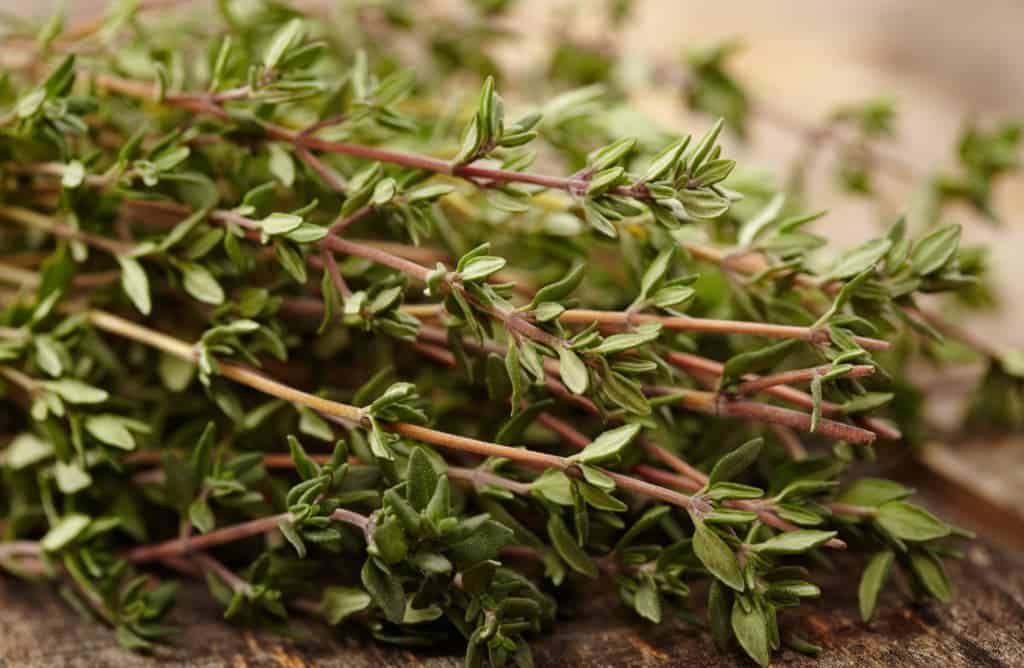
Thyme is a versatile, fresh-tasting herb that is one of the easiest herbs to grow indoors. Choose the regular variety or the popular lemon variety for a bright, citrusy flavor that tastes great with chicken.
When growing thyme indoors, allow it to dry out between waterings and regularly trim to keep it neat and encourage new growth. Thyme makes a beautiful house plant with its trailing stems and petite leaves.
I also like to take my plants outdoors every few days to get fresh air and a little sunshine.
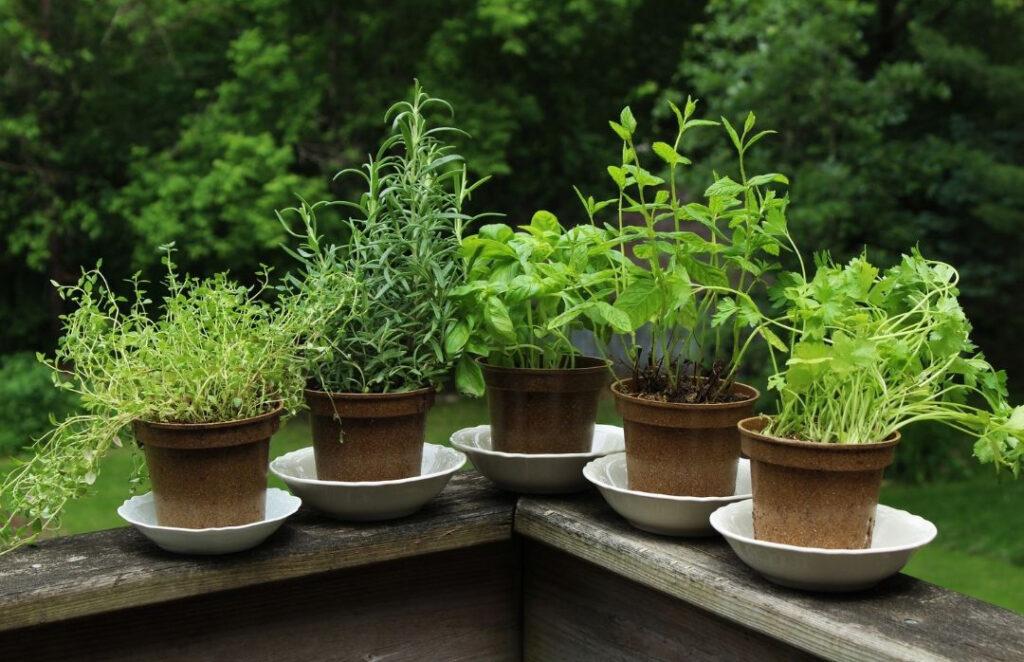
Other Tips for Growing Herbs Indoors
Watering
Check the moisture level by sticking your finger in the soil for about one inch. Keep the soil moist, but do not overwater. If the plant becomes too wet, the roots will rot.
Harvesting
Make sure your herbs are mature before you harvest. Only harvest up to one-third of the plant at a time. Then, wait until it grows before harvesting to keep your plant healthy.
Drying
If your herbs grow faster than you can use them fresh, preserve them by drying and storing them to use later. Learn more about this process and different techniques from The Spruce Eats.
You can also freeze fresh herbs for later.

Shop My Favorite Garden Items


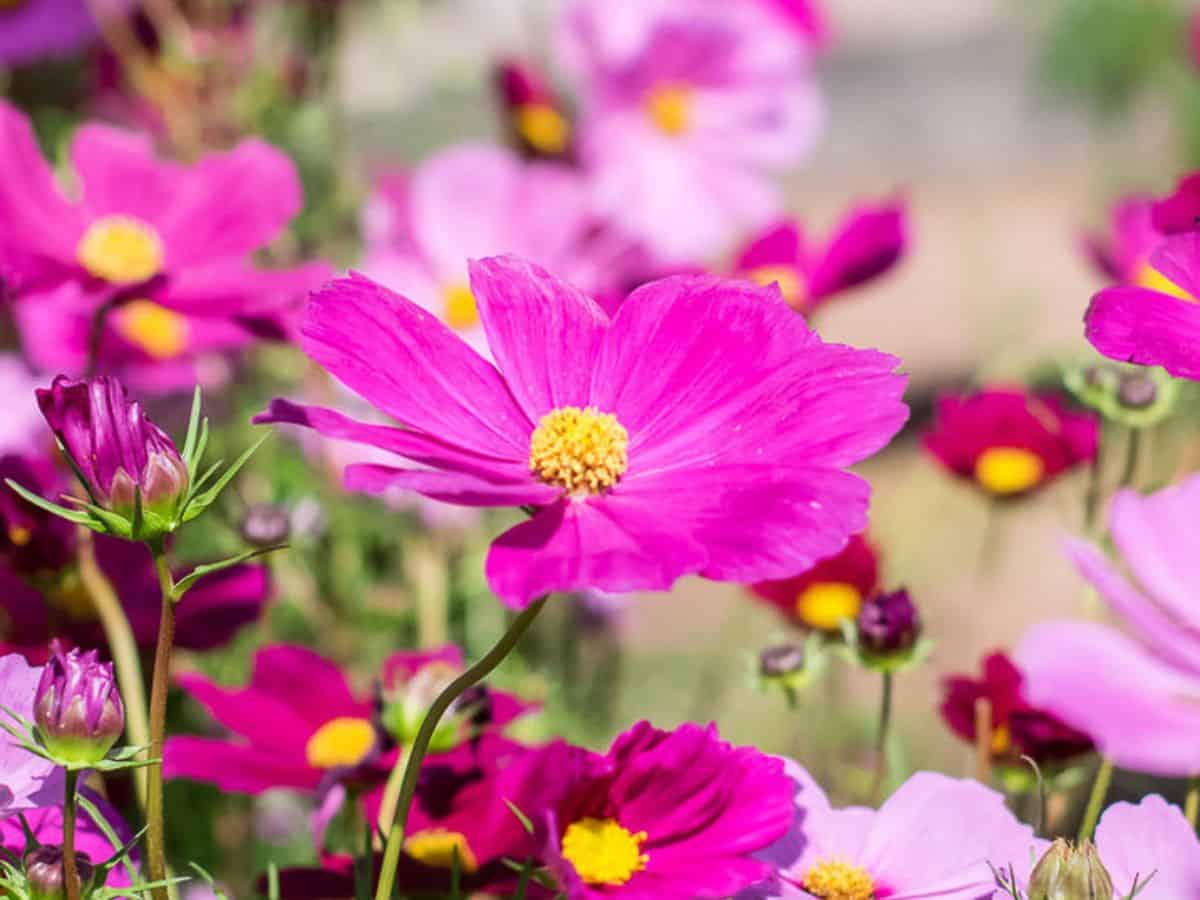
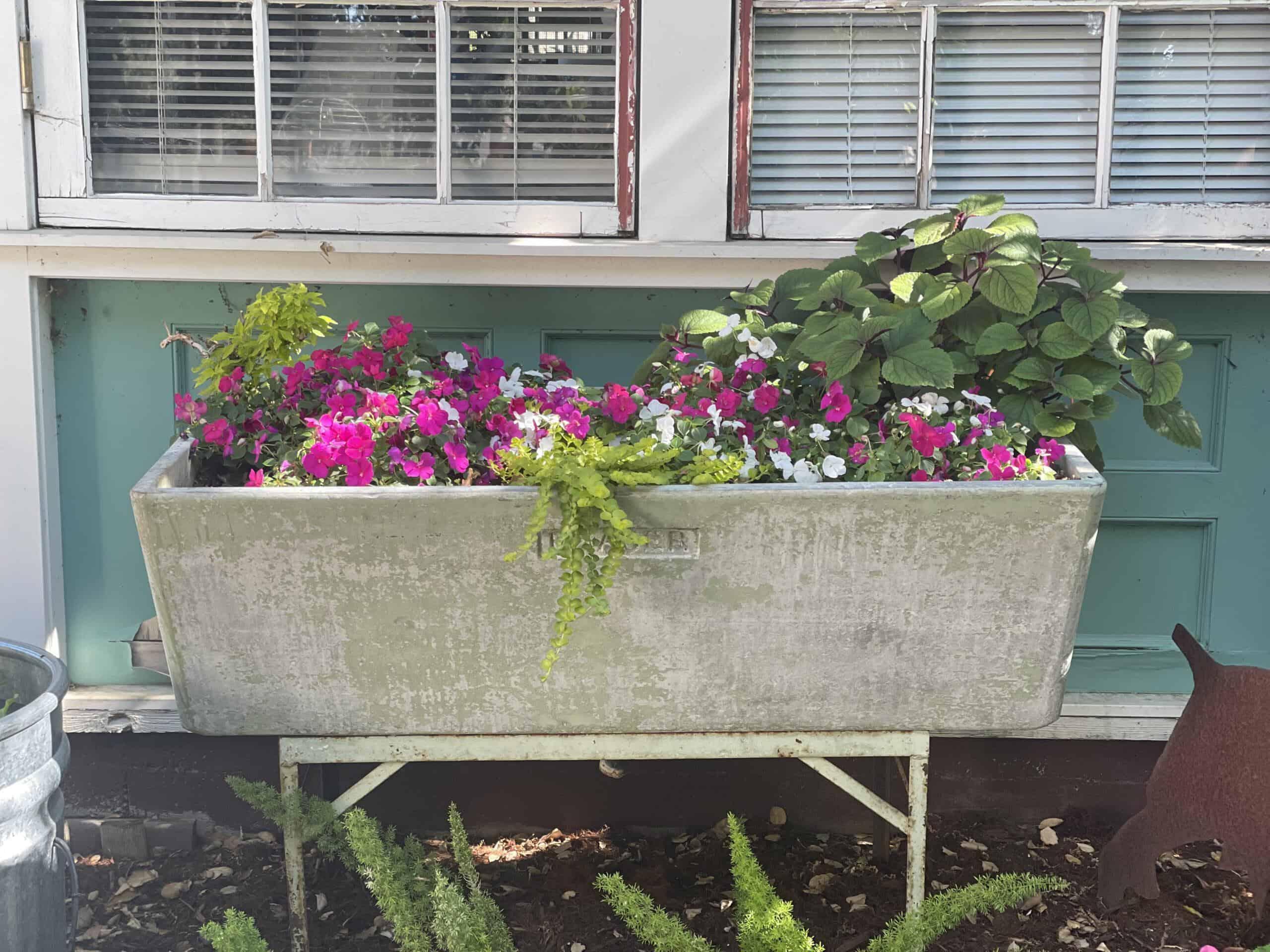
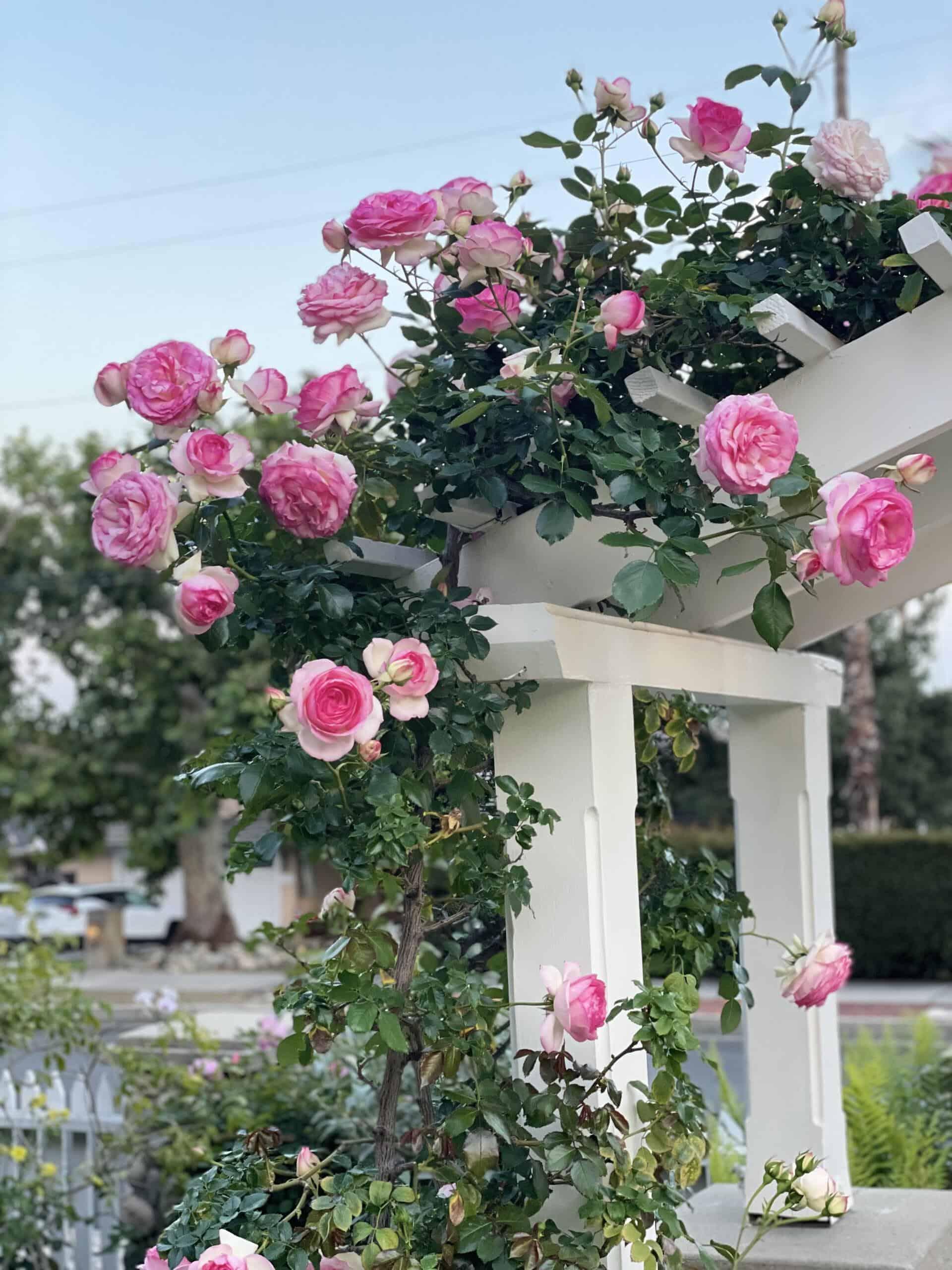

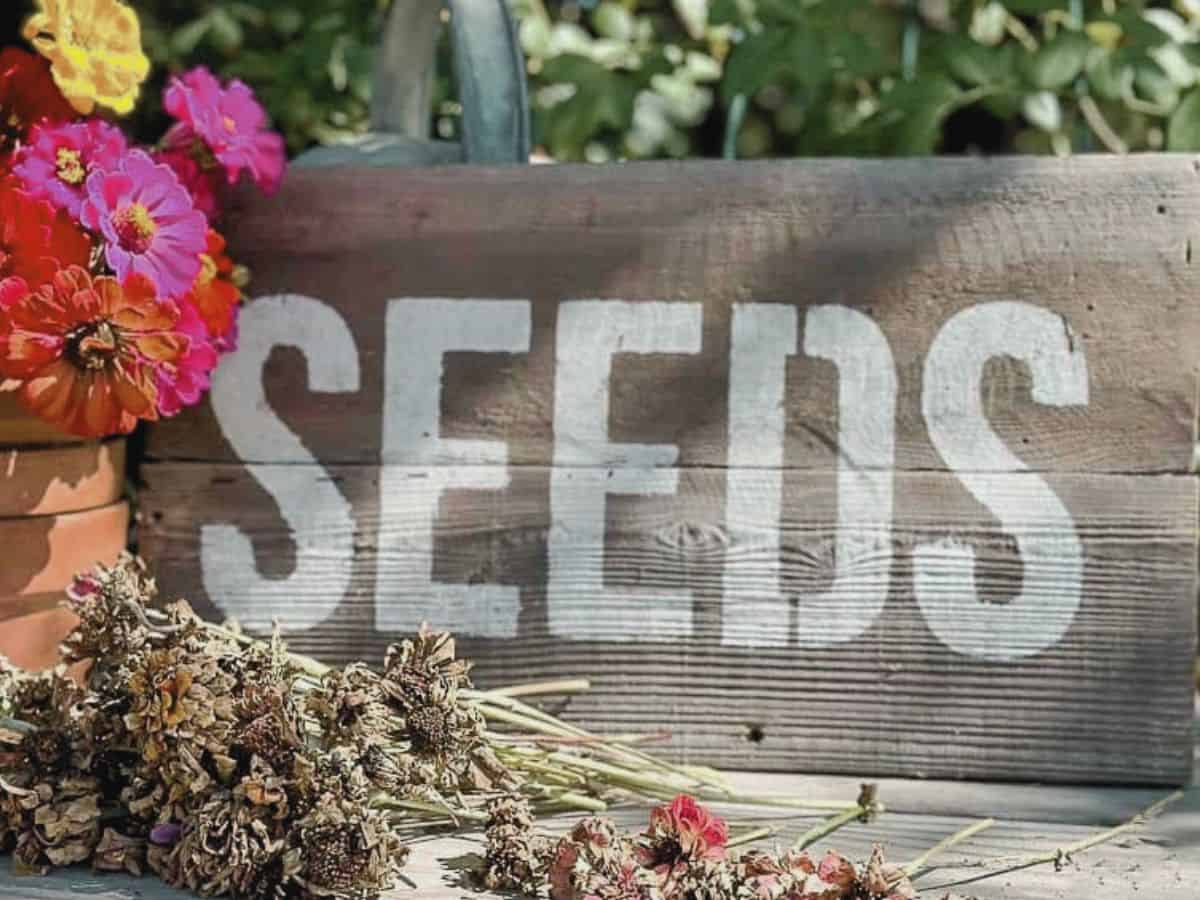
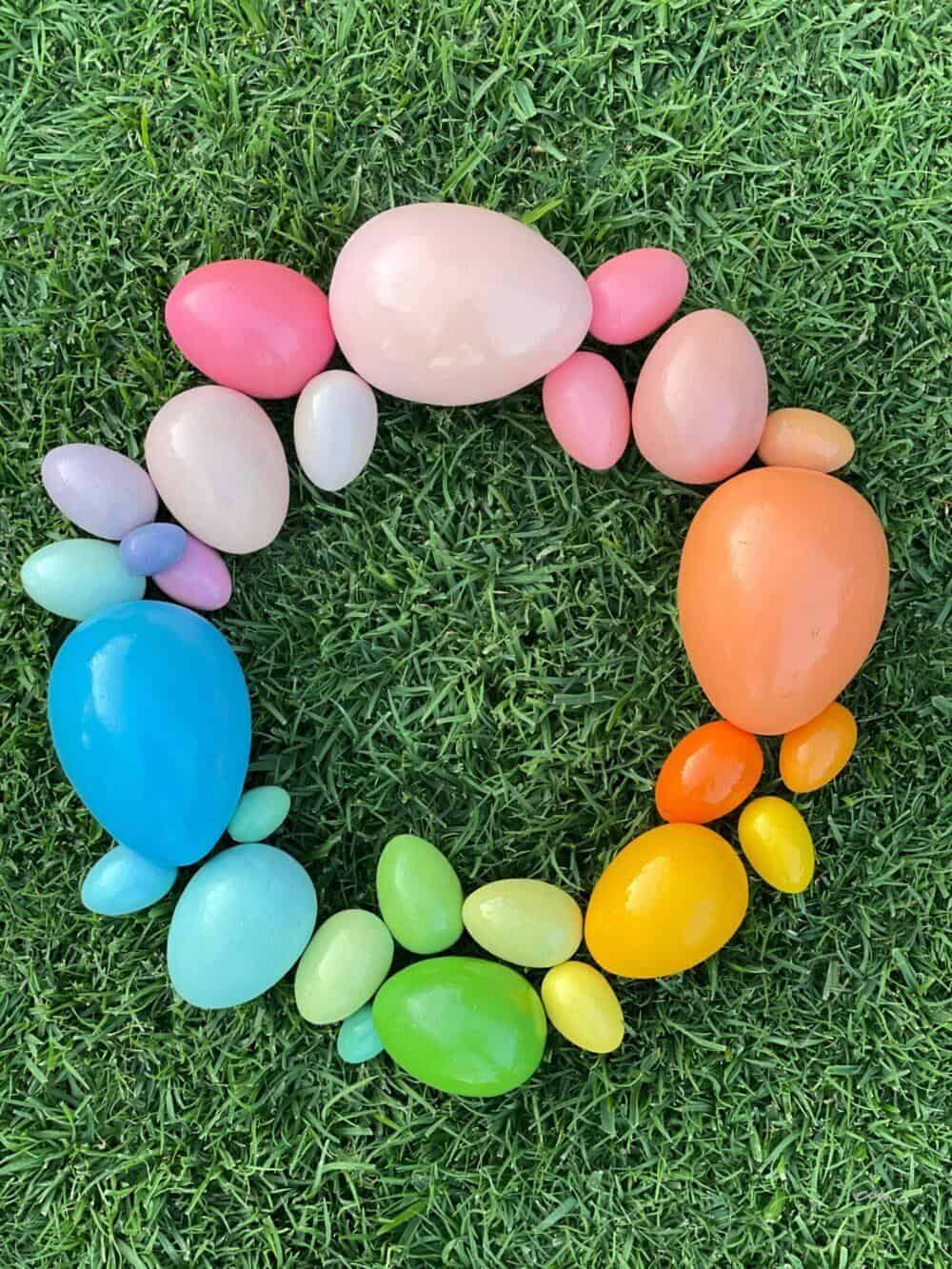
Such a great post! I love to grow herbs each summer. I need to find the patience to grow them from seed. I’m just too impatient! However, you have inspired me!
Thank you, Missy! You can do it. It just takes a bit of time. I have to be honest. I mostly buy the plants. I get too impatient.